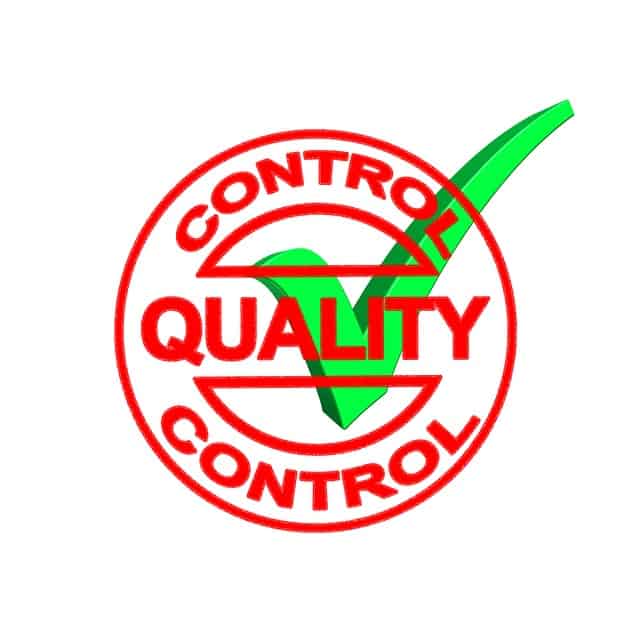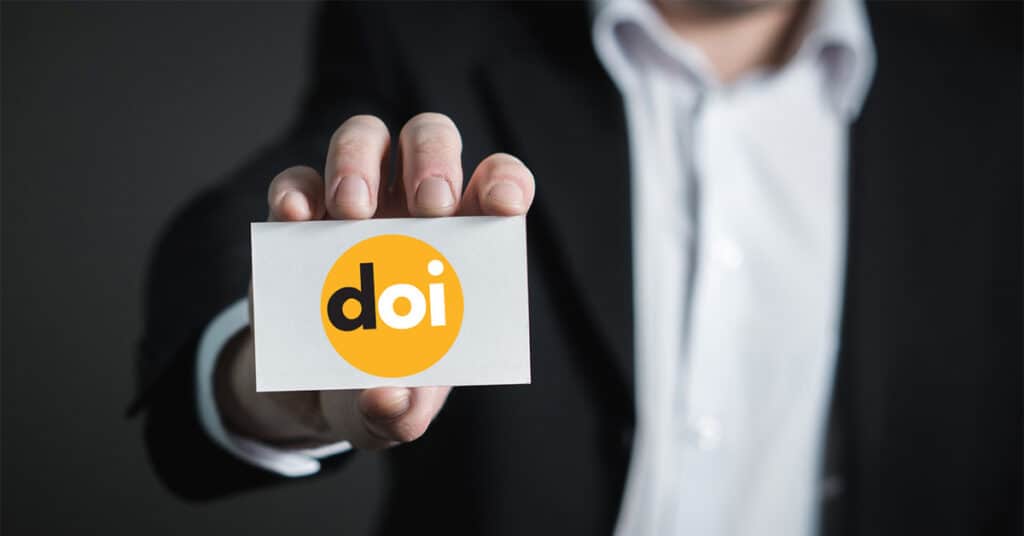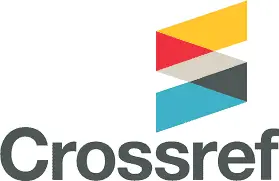What is a Digital Object Identifier (DOI)?Digital
In many articles on this blog we will refer to a “DOI”, which stands for Digital Object Identifier. But what does this mean and what do DOIs do?
DOIs are permalinks. That is, they are URLs that do not change even if the location of the files, on the internet, changes. DOIs are most often used for scientific journal articles, although they can be used for other items as well, such as data repositories, technical reports etc.
A take home message of this article is that in the context of scientific publishing and predatory publishing a DOI is NOT an indicator of quality. Just because a scientific paper has a DOI, it says nothing about the quality of either the paper or the journal. If a journal is suggesting that, because it has a DOI, it is somehow a validation of its quality, you should question why they are suggesting that this is the case.
In the rest of this article, we look in a little more detail at DOI’s.
Why do we need Digital Object Identifiers (DOIs)?
A DOI is a permalink (most commonly) to a scientific paper. This means that the same URL will always “point to” the paper, no matter where it is stored on the internet. Even if the paper’s location on the internet changes, the DOI will remain the same, enabling you to access it using the same URL. That is, you have a permanent link to the article.
Indeed, you are unaware where the paper is located, nor do you care. Your only concern is that you can locate it and the permalink, by virtue of its DOI, enables you to do that.
If there was no concept of permalinks and the paper used to be accessed using the URL:
http://www.Old-Domain.com/ThePaper
… but it has been moved, so that its new URL is
http://www.New-Domain.com/ThePaper
… you would need to know this and use the new URL, rather than the old one. This can be a pain, especially if you have to update URLs on numerous web sites. It is even more problematic if you are not the only person/organization who gives access to the paper. You may have it in reports, others may have tweeted it, there will also be links to the paper that you are unaware of so you cannot let the relevant person know.
If the paper has a DOI of, let’s say, 10.1234/12345.987, you just would use the URL
https://dx.doi.org/10.1234/12345.987.
This URL would have pointed at the old domain (unbeknown to you), but when the domain was changed, the domain owner would be responsible for making the change, to point the DOI at the new location. You would then be able to use the same URL that you always had (https://dx.doi.org/10.1234/12345.987). That is, you have a permalink to the article that can be used no matter where the paper is located. The owner of the article takes on the responsibility so that the DOI points to the correct place on the internet.
To be clear, when an article is moved, those responsible for the article (typically a publisher) has to update the “DOI system” to tell it that article has moved from one location to another, but that is totally transparent to the user. The user still has the option to use the actual URL, but why bother? You may as well use the DOI permalink.
Another way of looking at it, is to think of a DOI as a mapping between the DOI and the article. The DOI never changes (it is permanent) but where it points to can change. As long as you know the DOI, where it maps to does not matter. The DOI system takes care of that for you.
So, we need DOIs so that once a paper has been allocated a DOI it has a URL that never changes, so that you can easily locate the paper.
The format of a Digital Object Identifier (DOI)
The format of a DOI is defined under the International Organisation for Standardization (more commonly known as ISO). To be precise it is defined under ISO 26324.
The format of a DOI is available on the DOI web site. In summary, the format is.
- The first two characters are always ’10’, followed by a period.
- This is followed by a registrant identifier. This uniquely identifies any entity that has registered with DOI.
- This first part (’10.’ and the registrant identifier) of the DOI is known as the DOI prefix.
- Following the DOI prefix is a forward slash.
- Next comes the DOI suffix,which is a string of characters that is defined by the DOI registrant. It can be of any length and is used to uniquely identify each publication (or other item) that they wish to assign a DOI too.
As an example, the DOI 10.1081/E-ELIS3-120044418:
… has the standard prefix if ’10.’, followed by a registrant code of 1081. The rest, the DOI prefix, (E-ELIS3-120044418) has been defined by the registrant.
You can see that this DOI links to a book by using this URL – http://dx.doi.org/10.1081/E-ELIS3-120044418.
How to use a Digital Object Identifier (DOI)?
Once you know the DOI of an article, you can access it by using the URL:
https://dx.doi.org/DOI
… where DOI, is the DOI of the paper you wish to access.
For example, if a paper has a DOI of
10.1007/s12109-999-0022-2
… then you would type
https://dx.doi.org/10.1007/s12109-999-0022-2
… into your browser. This will lead you to the paper, which, in this case, is a paper called “The Digital Object Identifier (DOI)“, which might be of interest to those reading this article.
When you get to the page for the paper, you’ll see that the URL address has changed to
https://link.springer.com/article/10.1007/s12109-999-0022-2.
You could have used this URL (if you knew it) but if the publisher, Springer in this case, move the paper’s location, that URL may no longer work, but the DOI URL will always work, as it is a permalink to the article.
Who manages the Digital Object Identifier (DOI) system?
The DOI system is managed by a not for profit organization, called the International DOI Foundation (IDF). They have a web site at https://www.doi.org/, which includes details of the DOI system, how to use it and how to register to use DOIs. If you have an interest in DOIs, this web site is a must visit.
History
The DOI system can be traced back to the 1997 Frankfurt Book Fair, where it was formally announced. In the same year, the International DOI Foundation was also formed to manage this initiative.
In 2000, Crossref were the first agency to adopt the system, and start linking electronic articles. Other registration agencies have since been appointed.
The syntax of the DOI system was also standardized at this time, and was later formally approved by ISO in 2010.
If you want further information about the history of the DOI system, the DOI web site has a section dedicated to this topic.
How do you get a DIgital Object Identifier (DOI)?
To get a DOI (registrant identifier), you need to register with one of the recognized agencies. These are listed at https://www.doi.org/registration_agencies.html. You might also want to take a look at the DOI handbook which talks about DOI agencies.
We have no affiliation with any of these, but we know that it can be confusing to know which one to choose. Only because we have had experience with https://www.crossref.org, we suggest that you start there. Crossref was also the first agency to adopt the DOI system in 2000, so they have a good track record.
How do you assign a Digital Object Identifier (DOI) suffix?
Registering with an agency provides you with a DOI registrant identifier. When you use the DOI, you will add your own DOI suffix (that is “/“ followed by a string of characters chosen by you) to make up the URL that users will utilize.
You need to give the DOI suffix some thought and Crossref offers some advice. As an example, it says to be careful of using page numbers in a DOI as you may not know the exact page numbers before you want to assign a DOI to a particular paper.
Is a Digital Object Identifier (DOI) an indication of quality?

As mentioned in the introductory remarks, the fact that a paper has a DOI does not say anything about the quality of the paper or the journal. It is relatively simple to register as a publisher, or a journal to get a DOI prefix, and then start assigning papers to that prefix to enact a permalink.
The International DOI Foundation provides a very good service at managing DOIs, but it does nothing, and nor should it, to check the quality, authenticity or validity of the articles that are using a DOI to get a permalink.
What does this mean for predatory publishing?
In the context of predatory journals and/or publishers, the fact that their articles have a DOI means nothing in terms of the quality of the journal/publisher.
If a particular journal/publisher is suggesting that, as their papers have a DOI, this validates the quality of the publisher/journal/paper, this should raise a red flag that the journal may be predatory.
It is good for journals to use a Digital Object Identifier (DOI) to provide access to its papers, but if it uses this fact to promote (suggest) its quality, this should be seen as a negative point, rather than a positive.
Article history
Where an article has been updated since first being written, we provide a history of the changes. Why? Why not :-).
- The original article was published on 6 January 2020.
- The article was updated on 20 June 2023. The main content was not changed but we reformatted it a little (as we now have more experience with the tools we use) and also to try and improve the flow. We also updated some of the H@ headings to assist SEO.
- 25 Oct 2024. Based on a response to one of our tweets about this post, it was pointed out that “Document” had been used instead of “Digital”. These oversights were corrected – thank you to the person that notified us of this.




